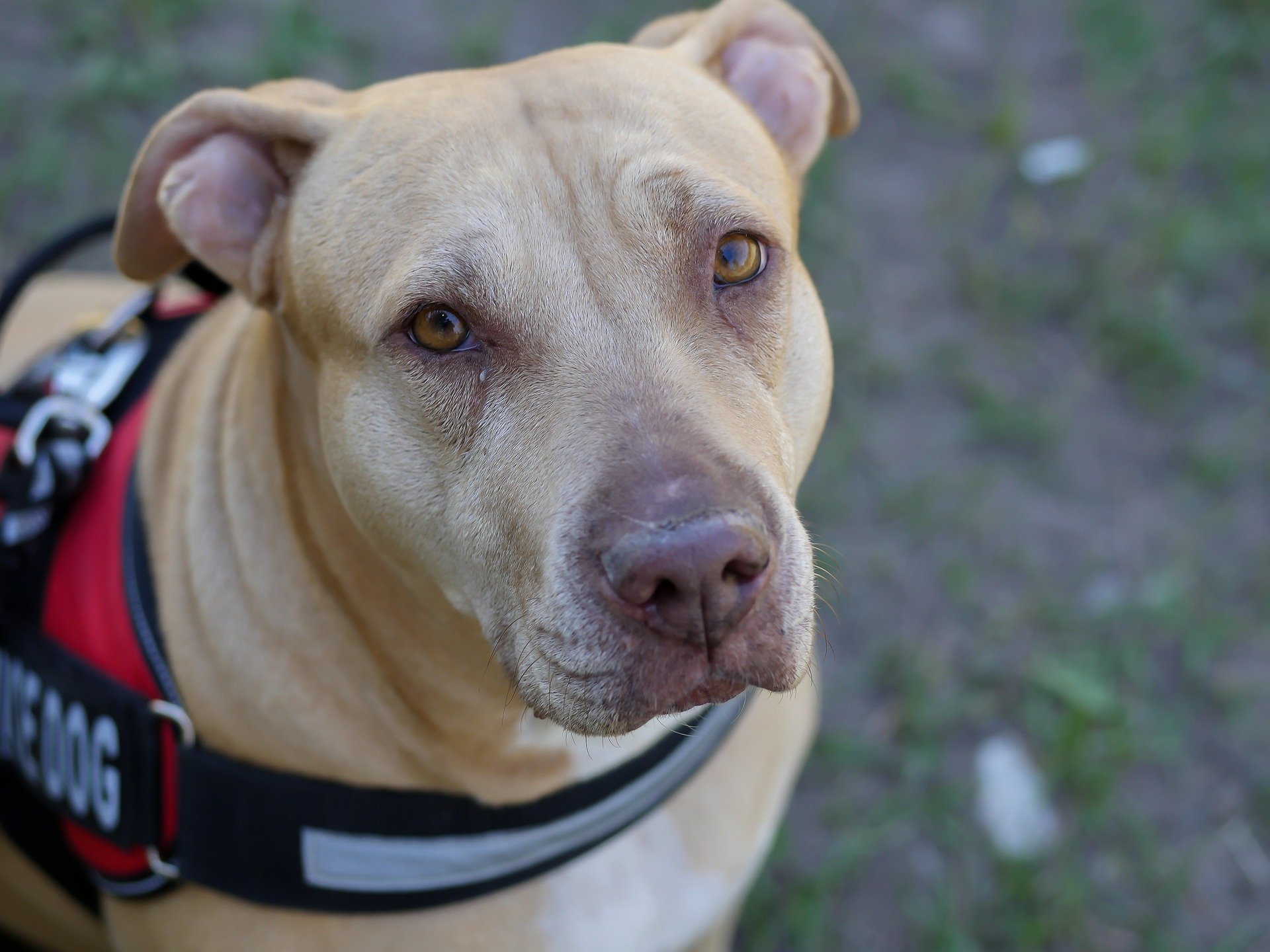Americans love pets. Over half of US households have a pet according to the American Veterinary Medical Association. You are missing out on a significant portion of your target market if you don’t allow pets in your rentals. But be sure to protect yourself with a pet addendum before you make your rental pet-friendly. This article will guide you through the steps to writing a foolproof pet addendum.
Decide if you will allow pets
Opening up your properties to pets can be a great competitive advantage but also comes with many risks.
Advantages
The biggest advantage to allowing pets in your rental is that you will attract many more prospective tenants. There are simply far fewer choices for tenants with pets. This is a great competitive advantage.
Additional advantages include higher revenues and a lower turnover rate. That’s because tenants with pets stay in their homes two and half times longer than tenants without pets.
Disadvantages
Pet damage is the main reason many landlords don’t allow pets in their rentals. They’ve experienced what a rambunctious dog can do to doors, walls and lawns firsthand. Other downsides to making your rental pet-friendly include noise complaints from other tenants or neighbors, lingering odors and risk of injuries.
How to Write a No Pets Clause
If you’ve decided there are too many risks to allowing pets in your rentals, then be sure to include a “No Pets” clause in your lease agreement.
Adding a No Pets clause to your standard lease is straightforward. There should be 3 parts to the clause. First, explicitly forbid any pets on the premises, even temporarily. Second, state the actions you will take if a violation is found, including charging additional fees. Finally, clearly state that you will charge the tenant for costs incurred as a result of the lease violation.
Here’s an example of a No Pets lease clause:
NO PETS ALLOWED. No pets, whether the lessee’s or not, are permitted anywhere on the property, even temporarily, without the prior written approval of the Lessor.If a pet is found on the property, the Lessor may take any or all of the following actions:
- Declare the tenant to be in violation of the lease agreement and begin eviction proceedings accordingly
- Charge the lessee an additional rent of $10 per day until the pet is removed
- Remove and turn over the pet to the proper authorities after providing written notice of intention to do so
Lessee will also be charged for any damages caused by the unauthorized pet and for any removal costs.
However, be aware that this clause could be unenforceable in certain circumstances. If you have allowed tenants to have a pet in the past and then try to add a No Pets clause in the next lease renewal, courts have sided with the tenant in this circumstance. Or if you have a no pets clause that wasn’t enforced, you can’t just start enforcing it.
What About Service or Emotional Support Animals?
 Are you obligated to rent to tenants with special needs animals? Generally, yes. A Service Animal or Assistance Animal (AKA Emotional Support Animal) is not considered a pet under the laws. You must make reasonable accommodations for tenants with these animals but the laws and rules governing each are different.
Are you obligated to rent to tenants with special needs animals? Generally, yes. A Service Animal or Assistance Animal (AKA Emotional Support Animal) is not considered a pet under the laws. You must make reasonable accommodations for tenants with these animals but the laws and rules governing each are different.
Here is a great article from Rentprep that covers the different laws governing Service Animals and Emotional Support Animals. However, it is best to seek local legal advice in this area as every jurisdiction has different regulations.
How to write a foolproof Pet Addendum
If you’ve decided to allow pets in your rental, follow these steps to ensure a foolproof pet addendum.
Pet Screener
 Think of each pet as an applicant. I use the following questions to gather basic information for each pet and understand what risk factors they may have.
Think of each pet as an applicant. I use the following questions to gather basic information for each pet and understand what risk factors they may have.
Name of pet owner:
Name of pet:
Pet Type:
Breed:
Color:
Weight:
Age:
City license number:
City of license:
Date of last rabies shot:
Vet Contact information:
Is your pet housebroken?
Has your pet been Spayed or Neutered?
How many hours does your pet typically stay outside per day?
Has your pet caused any damage before?
Has your pet ever attacked anyone before?
How long is your pet alone during the day?
How often do you travel away from home per month on average?
Who watches your pet when you are away overnight?
When can we set up a time to meet your pet(s)?
Smart Pet Addendum Clauses
Here are some smart pet addendum clauses to include if you decide to authorize a pet in your rental.
Pet Addendum Clause #1 – Conditional Authorization
Make it very clear that you are not providing blanket authorization for any pet the tenant wants. Each pet will be considered separately and you reserve the right to refuse any pet. Tenants must follow the rules outlined in the Pet Addendum or you can revoke this privilege or terminate the lease. See example below.
Pet Addendum Clause #2 – Refundable Pet Deposit
If your local laws allow for an additional refundable pet deposit then you should include it in the pet addendum. Be sure to comply with your local laws – these can vary across states and within states. In New Jersey, where I live, the state limits the maximum security deposit. If this is the case in your state, DO NOT INCLUDE A PET DEPOSIT. Charge the maximum allowable security deposit. If you stipulate that a portion of the security deposit is for Fido, your tenant has a good argument for refunding the pet deposit even though the tenant themselves caused more damage than the entire security deposit.
Pet Addendum Clause #3 – Additional Pet Rent
 Charge a reasonable monthly rent per pet. Do not charge a flat rate as you want to be able to charge more should the tenant want to add a friend for Tabby. Check your local listings for the going rate. Anywhere between $25 and $100 per pet should be reasonable.
Charge a reasonable monthly rent per pet. Do not charge a flat rate as you want to be able to charge more should the tenant want to add a friend for Tabby. Check your local listings for the going rate. Anywhere between $25 and $100 per pet should be reasonable.
Pet Addendum Clause #4 – No Limit Liability
The additional pet security deposit and rent are not a limit of the tenant’s liability for damages. They will be responsible for costs incurred to clean and repair the property along with costs incurred due to personal injuries.
Pet Addendum Clause #5 – Violation Fee
Include a fee if a pet is found on the premise in violation of the provisions of the pet addendum. Make it hefty enough that a tenant will think twice before trying to sneak in an extra cat but reasonable enough that a judge wouldn’t throw it out. I use $300 in my pet addendum.
Pet Addendum Clause #6 – Pet Description
Include a description of each pet in the pet addendum so there is no confusion. Simply lift this information from the pet screener.
Pet Addendum Clause #7 – House Broken
 Ensure all pets are housebroken. You don’t want your rental to be the training grounds for a new puppy. In fact, I only allow puppies 16 weeks or older to avoid this altogether. You can also add requests to keep nails trimmed and water bowls on top of rubber mats in this section.
Ensure all pets are housebroken. You don’t want your rental to be the training grounds for a new puppy. In fact, I only allow puppies 16 weeks or older to avoid this altogether. You can also add requests to keep nails trimmed and water bowls on top of rubber mats in this section.
Pet Addendum Clause #8 – Pet Restrictions
In this section you will set the parameters for allowable pets. Try to be as specific as possible to avoid later hassles.
- Max Weight – I set a maximum allowable weight of 20lbs per pet but you can use whatever you are comfortable with. Be aware that many small dog breeds can be just destructive as larger ones, if not more. The key is to screen for their personality up front.
- Prohibited Animals & Breeds – I have a very specific list of prohibited dog breeds along with specifically prohibited pets such as iguanas and snakes.

SPECIFICALLY PROHIBITED: THE FOLLOWING SPECIFIC BREEDS OF DOGS (OR DOGS MIXED WITH THESE BREEDS) AND OTHER ANIMALS ARE NOT PERMITTED:
Pit Bulls (aka American Staffordshire Terriers, Staffordshire Bull Terriers, or American Pit Bull Terriers), Bull Terriers, Bull Mastiffs, German Shepherds, Huskies, Malamutes, Doberman Pinschers, Rotweillers, Chow Chows, and Rhodesian Ridgebacks. Dogs must be contained in an area so as not to interfere with any maintenance service which has been requested. No wild animals are permitted – such as birds (except those that are caged), chinchillas, ferrets, fish (in tanks 20 gallons or more without adequate insurance naming Lessor as additional insured), iguanas, monkeys, pot-bellied pigs, rabbits, raccoons, rodents of any kind, skunks, snakes or reptiles of any kind, tarantulas, scorpions or spiders of any kind, weasels.
Pet Addendum Clause #9 – Special Provisions
Tenants should agree to adhere to rules for their pets.
General Rules should set up basic expectations for both your tenant and their pet.
- Pets shouldn’t be a nuisance and disturb others
- Immediately clean up after pet waste
- Keep pets away from prohibited areas (parking lots, pools, etc.)
- Keep pets well fed and watered
- Supervise pets at all times when outdoors
- Comply with local pet ordinances and tag requirements
Rules for specific pets will outline your requirements and restrictions for each type of pet allowed (or not allowed).
SPECIFIC TYPES OF PETS. The following rules apply to specific types of pets:
DOGS. Dogs must be spayed or neutered. Veterinary proof may be required. No puppies (four (4) months or less) are allowed. No adult dog, fully grown, will exceed twenty (20) pounds. Up to two (2) dogs will be allowed as long as they do not exceed the forty (40) pound weight limit.
CATS. No cat is permitted on the Premises at any time.
FISH. Stand must be sturdy. No aquarium with a capacity greater than twenty (20) gallons shall be kept on the Premises. Residents must place aquariums in a safe location in the apartment, on a shelf or table giving the aquarium enough support. Residents shall be responsible for all damage caused by leakage or breakage from any aquarium. Resident shall provide proof of adequate insurance naming Lessor as additionally insured if aquarium is twenty (20) gallons or more.
Additional Rules – reserve the right to make reasonable changes if necessary
Pet Addendum Clause #10 – Removal of Pet
Sometimes it might be necessary to remove a pet from a tenant’s residence. Include a clause allowing you to take action if a tenant’s pet has been neglected, poses a threat to other tenants or has repeatedly violated the Pet Addendum provisions. Clarify the circumstances that might prompt you to remove the tenant’s pet.
 Pet Addendum Clause #11 – Liability for Damage and Costs
Pet Addendum Clause #11 – Liability for Damage and Costs
Clearly hold your tenants responsible for any costs incurred as a result of their pet. In addition to covering any damages, you should also include costs to clean, deodorize and de-flea the property if necessary. Be sure to include the following statement in your pet addendum: PET DAMAGE OF ANY KIND IS NOT CONSIDERED NORMAL WEAR AND TEAR.
Include a provision to indemnify you as landlord for all litigation costs resulting from any injuries their pet may cause. Consider requiring your tenant to carry additional pet liability insurance if it is not already part of their renter’s insurance. Here’s a good guide to dog owner liability insurance from Nolo.
Writing A Pet Addendum
Want help writing your Pet Addendum? The Landlord’s Guide to Writing Great Leases includes a full section on Pet Addendums along with editable lease clauses like the ones above and more. It will also help you easily create a custom lease that protects your biggest investment. Don’t use a lease that doesn’t protect you!
Seek Legal Advice
This article is not intended to replace legal advice. It is instead a thorough review of the issues you will want to consider when drafting a pet addendum. You should always seek local expert guidance when drafting legal forms. You can start with an online landlord forms service and then have a local attorney review your document for less than it would cost to have them draft it for you. Visit ezLandlordForms (affiliate partner) for free and premium forms that are editable and prepared by legal experts.
Ask A Lawyer Online Now
Need a quick answer from a legal expert but don’t want to retain an attorney?
Try Rocket Lawyer’s Ask-A-Lawyer service (affiliate partner). Their on-call network of lawyers can answer your question fast without the high fees.
Want More Awesome Landlord Tips?
 Sign up today for the monthly Accidental Rental newsletter for access to more money saving tips! When you sign up, you will automatically receive my latest free gift designed to help save you money and become an awesome landlord.
Sign up today for the monthly Accidental Rental newsletter for access to more money saving tips! When you sign up, you will automatically receive my latest free gift designed to help save you money and become an awesome landlord.
Did you find this article helpful?
Please share this article if you’ve found it helpful in addressing your pet addendum questions.


 Pet Addendum Clause #11 – Liability for Damage and Costs
Pet Addendum Clause #11 – Liability for Damage and Costs


Excellent! Very helpful
this article full of tips/hints and many other items to include when allowing a pet as part of the rental.
I appreciate this helpful article.
Thank you for the excellent information and guidelines.
Thanks! Glad you found the site helpful!
Thanks! So helpful.
Great article. Thank you.
I have 3 tenants and 2 of them have dogs. I generally put all the tenants on the pet addendum but they have asked to take the roommate without a pet off the addendum. Is it better to have all tenants sign the addendum since it is a house agreement. Our lease states that there can only be up to 3 dogs in the house which is what they currently have.
It depends on what is in the addendum. I wouldn’t try to hold the non-pet owner responsible for obvious pet damages and you also want them to acknowledge you are not allowing anymore pets. I would have them sign a a separate addendum acknowledging they are not allowed to have another pet and that they are still responsible for damages beyond normal wear and tear. I can a scenario where this tenant argues that they shouldn’t be responsible for any damages because it was all caused by the pets but the pet owners each deny it was their pet.
Thank You. My prop manager allowed a tenant to move in even after I put in an addendum NO dogs. Then found out after they had 2 dogs. They say they are service animals. So upset w/ manager and tenants. I know I need to get the proper info if they really are.
This is such a well written piece, filled with great tips and specific guidance. Thank you!
Thanks! Glad you found it helpful.
Does anyone have a pet addendum that includes most this stuff? I would love to have. Please let me know!!!
I did a lot of research on the topic of ESA and Fair Housing laws, especially since I am in California. A landlord does not have to allow an ESA or companion animal on the property if: It is a single family home rented out by the owner (If you use a broker or service, then yes, you must allow). The other case in which an ESA can be denied is if the property is 4 or less units and the owner occupies one of the units.
My last tenant had an ESA and ruined the hardwood floors to the cost of $4600. You can bet I spent a lot of time researching the rules about ESA allowances.
Service Animals are completely different, they have real training and serve a true purpose and should be allowed if a tenant requires one.
Extremely helpful! Thank you!